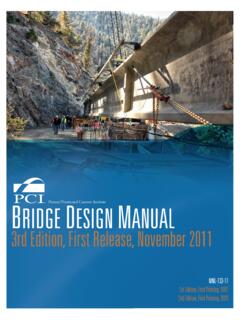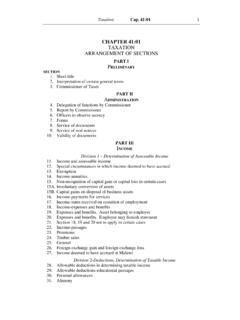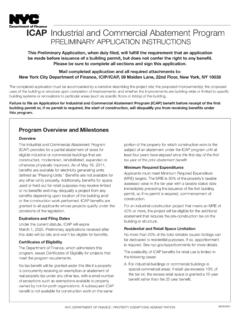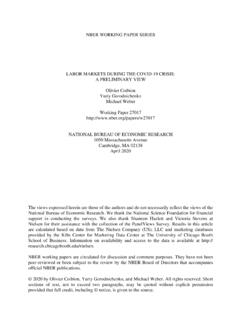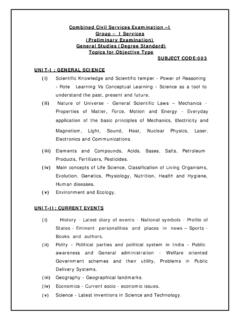Transcription of Preliminary Energy Savings Analysis ANSI/ASHRAE/IES ...
1 Preliminary Energy Savings Analysis ANSI/ASHRAE/IES Standard June 2017 (This page intentionally left blank) Preface ii Preliminary Energy Savings Analysis ANSI/ASHRAE/IES STANDARD List of Acronyms AEO Annual Energy Outlook ANSI American National Standards Institute ASHRAE American Society of Heating, Refrigerating, and Air-Conditioning Engineers CBECS Commercial Building Energy Consumption Survey CFL compact fluorescent lamp DDC direct digital control DOAS dedicated outdoor air system DOE Department of Energy ECI Energy cost intensity ECPA Energy Conservation and Production Act EIA Energy Information Administration EMS Energy management system ERV Energy recovery ventilator EUI Energy use intensity HVAC Heating, Ventilating, and Air Conditioning HVACR Heating, Ventilating.
2 Air Conditioning and Refrigerating IEER integrated Energy efficiency ratio IES Illuminating Engineering Society LPD lighting power density PNNL Pacific Northwest National Laboratory SHGC solar heat gain coefficient SSPC Standing Standards Project Committee SWH service water heating VAV variable air volume VFD variable frequency drive VRF variable-refrigerant-flow VSD variable speed drive Wh Watt-hour Executive Summary iii Executive Summary Title III of the Energy Conservation and Production Act, as amended (ECPA), establishes requirements for building Energy conservation standards, administered by the DOE Building Energy Codes Program.
3 (42 6831 et seq.) Section 304(b), as amended, of ECPA provides that whenever the ANSI/ASHRAE/IESNA Standard (Standard or 1989 edition), or any successor to that code, is revised, the Secretary of Energy (Secretary) must make a determination, not later than 12 months after such revision, whether the revised code would improve Energy efficiency in commercial buildings, and must publish notice of such determination in the Federal Register. (42 6833(b)(2)(A)) Standard is developed under ANSI-approved consensus procedures, and is under continuous maintenance by a Standing Standard Project Committee (commonly referenced as SSPC ).
4 ASHRAE has an established program for regular publication of addenda, or revisions, including procedures for timely, documented, consensus action on requested changes to the Standard was published in October 2016, triggering the statutorily-required DOE review process. To meet the statutory requirement, DOE conducted a Preliminary Analysis to quantify the expected Energy Savings associated with Standard This report documents the methodology used to conduct the Analysis below. Based on the Analysis , DOE has preliminarily determined that the 2016 edition of the ANSI/ASHRAE/IES Standard would improve Energy efficiency in buildings subject to the code compared to the 2013 edition of Standard Methodology The methodology applied in this Analysis is consistent with that utilized for previous DOE building Energy codes Analysis and determinations, and is based on a combination of qualitative and quantitative assessments: Qualitative.
5 The first phase of Analysis was a comparative review of the textual requirements of the Standard, examining specific changes (known as addenda ) made between Standard and the previous 2013 edition. ASHRAE publishes changes to Standard as individual addenda to the preceding Standard, and then bundles them together to form the next published edition. Addenda with direct impact on Energy use were identified, and their anticipated impact on Energy use was determined. Quantitative: The second phase of Analysis examined the impact of addenda having a direct impact on Energy use.
6 The quantitative phase uses whole-building Energy simulation and relies upon the established DOE methodology for Energy Analysis , which is based on sixteen representative building types across all climate zones, as defined by Standard Energy use intensities (EUIs) by fuel type and by end-use were developed for each building type, and weighted by the relative square footage of construction to estimate the difference between the aggregated national Energy use under Standard , which serves as the baseline, and Standard Results In creating Standard , ASHRAE published 121 addenda in total, of which: 46 are expected to decrease Energy use ( , increased Energy Savings ); 5 are expected to increase Energy use ( , decreased Energy Savings ), and.
7 70 are expected to have no direct impact on Energy Savings (such as administrative or clarifications or changes to alternative compliance paths). 1 More information on ANSI/ASHRAE/IES Standard is available at: iv Executive Summary Preliminary Energy Savings Analysis ANSI/ASHRAE/IES STANDARD Commercial buildings meeting the requirements of Standard exhibit national Savings of approximately (compared to Standard ): percent Energy cost Savings ; percent source Energy Savings , and; percent site Energy Savings .
8 Energy cost indices (ECIs) and EUIs by building type are shown in Table and Table for Standard and Standard , respectively, including site and source Energy . Percentage Savings aggregated at the national level are shown in Figure and analogous tables aggregated by climate zone are included in Section Figure Percentage Savings by Building Type from to OfficeMedium OfficeLarge OfficeStandalone RetailStripmall RetailPrimary SchoolSecondary SchoolOutpatient HealthcareHospitalSmall HotelLarge HotelWarehouseQuick Service RestaurantFull Service RestaurantMid-Rise ApartmentHigh-Rise ApartmentWeighted National AveragePercentage Savings by Building Type Site EUIS ource EUIECIE xecutive Summary v
9 Table Estimated Energy Use Intensity by Building Type Standard Building Type Prototype Floor Area Weight (%) Whole Building Energy Metrics Site EUI (kBtu/ft2-yr) Source EUI (kBtu/ft2-yr) ECI ($/ft2-yr) Office Small Office $ Medium Office $ Large Office $ Retail Stand-Alone Retail $ Strip Mall $ Education Primary School $ Secondary School $ Healthcare Outpatient Health Care $ Hospital $ Lodging Small Hotel $ Large Hotel $ Warehouse Non-Refrigerated Warehouse $ Food Service Quick Service Restaurant $ Full Service Restaurant $ Apartment Mid-Rise Apartment $ High-Rise Apartment $ National $ Table Estimated Energy Use Intensity by
10 Building Type Standard Building Type Prototype Floor Area Weight (%) Whole Building Energy Metrics Site EUI (kBtu/ft2-yr) Source EUI (kBtu/ft2-yr) ECI ($/ft2-yr) Office Small Office $ Medium Office $ Large Office $ Retail Stand-Alone Retail $ Strip Mall $ Education Primary School $ Secondary School $ Healthcare Outpatient Health Care $ Hospital $ Lodging Small Hotel $ Large Hotel $ Warehouse Non-Refrigerated Warehouse $ Food Service Quick Service Restaurant $ Full Service Restaurant $ Apartment Mid-Rise Apartment $ High-Rise Apartment $ National $ vi Executive Summary Preliminary Energy










